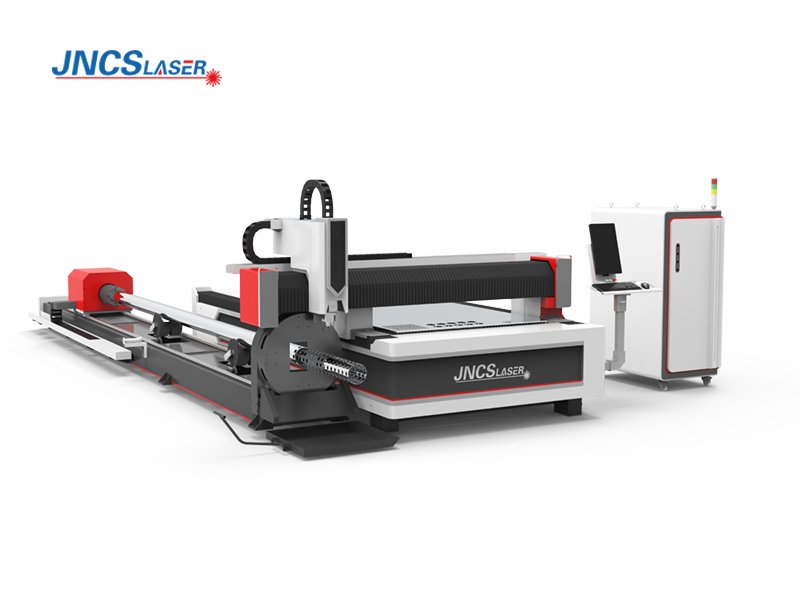How to Choose the Right Laser Cutting Machine for Sheet Metal?
There are various types and specs of sheet metal laser cutters. You know the sheet metal firm requires a wide range of materials and thicknesses. So, they usually have different needs when it comes to the device.
Note that each material behaves differently with laser beams. So, it is necessary to think about these factors before buying a sheet metal laser cutter.
To get the best results when cutting sheet metal, you need to choose the right laser device. The right device always ensures high-quality finishes. As a result, you can improve productivity. It also reduces material waste.
1. Safety features
Safety features should be the first thing you look for in a آلة القطع بالليزر. It usually makes sure that the workplace is safe. Some safety features that stand out are emergency stop keys, laser safety systems, and ventilation.
Not caring about the safety features could have bad results. However, the new laser devices always have all the necessary safety features. But if you don’t know about them, you might forget about maintaining them regularly.
Because of this, they might get damaged over time. Lastly, it could lead to injuries and accidents, health risks, or even damage to tools.
2. Power & Speed
In laser cutting, the laser machine’s power affects the cutting speed. Therefore, the power rating for a آلة القطع بالليزر for sheet metal is an important consideration.
Note that higher power makes faster cuts. Conversely, lower power makes slower cuts. But it must not be too fast or too slow. Therefore, choosing the appropriate power level is very necessary.
Moreover, different types of materials need varying power levels. For example, wood, acrylics, or paper may need lower laser power. On the other hand, metals need high power.
When thinking about metals, varying metals need varying power levels. Soft metals like aluminum or gold need less power. Conversely, hard metals like carbon or stainless steel need a higher power.
Therefore, choosing the right power level for a laser device is very necessary. In the case of a laser cutting machine for sheet metal, you must select a power level between 1000W and 30,000W. It typically depends on the specific application of your project.
3. Type Of Material and Its Thickness
In laser cutting, the type of materials matters. As was already said, different materials react differently to laser beams. It changes how the laser absorbs, reflects, and conducts light. For this reason, different materials need different laser settings to get the best results.
For example, carbon steel is very good at absorbing things. So, it works excellently with lasers that use oxygen. On the other hand, cutting stainless steel and aluminum usually needs nitrogen or a mix of gases.
The thickness of the material also plays an important role here. You know, thicker materials need higher laser power. Conversely, thinner needs lower laser power. If you give higher laser power to thin materials, it may produce excessive heat. This may damage your material.
The following table highlights the different laser powers for various materials and thicknesses.
Table 2: Different Laser Powers for Different Materials and Thicknesses
Metal | 1000 واط | 1500 واط | 2000 واط | 3000W | 4000W | 6000W | 8000W | 12000W |
الكربون الصلب | 8 mm | 10 mm | 14 mm | 18 mm | 20 mm | 22 mm | 25 mm | 35 mm |
ستانلس ستيل | 4 mm | 5 mm | 6 mm | 8 mm | 10 mm | 18 mm | 20 mm | 40 mm |
الألومنيوم | 2 mm | 3 mm | 5 mm | 8 mm | 10 mm | 16 mm | 20 mm | 30 mm |
4. Precision & Accuracy: What Factors Drive the Accuracy of a Sheet Metal Laser Cutter?
When selecting a product, you must check the precision guarantee. How accurate can your device be? Note that it determines the quality of the final product. In addition, they impact efficiency, waste reduction, and costs.
Why are precision and accuracy necessary when selecting the right laser device? It plays a crucial role in achieving desired outcomes in sheet metal cutting. If the final metal part meets the requirements, it will work well in the intended setting.
Now, how do you check the precision and accuracy of the device? You can easily do that by considering a few factors.
- The quality of the laser beam impacts cutting accuracy. A well-focused and uniform beam creates minimal heat-affected zones. It finally creates clean and precise cuts.
- The motion control system dictates the movement of the cutting head. The smoother it can move, the more accurate the cut will be.
- During laser cutting, the motion system creates certain vibrations. If your device has strong machine rigidity, it almost won’t affect the quality of the cut.
- Finally, the right laser power and settings are the most important factors to think about. Optimal power settings ensure precise kerf widths and edge quality.
5. Cost and Brand Reputation
Cost is another critical factor to consider when selecting a laser device. Note that it consists of two groups. One is the purchasing cost, and another is the total ownership cost (TCO).
Usually, laser devices have high purchase costs, but they offer a cost-effective solution over time. When picking a laser device, these two cost types should be taken into account.
A brand’s image is also very important. Indeed, well-known brands often provide better customer support. Over time, it makes you satisfied.
مرحبا بكم في الاتصال بنا للحصول على مزيد من التفاصيل.
بريد الالكتروني: info@jncslaser.com
ال WhatsApp: 0086 18254116182
Metal Plate and Tube Pipe Fiber Laser Cutting Machine
Professional Tube Pipe Fiber Laser Cutting Machine

 CN
CN AR
AR ES
ES RU
RU







